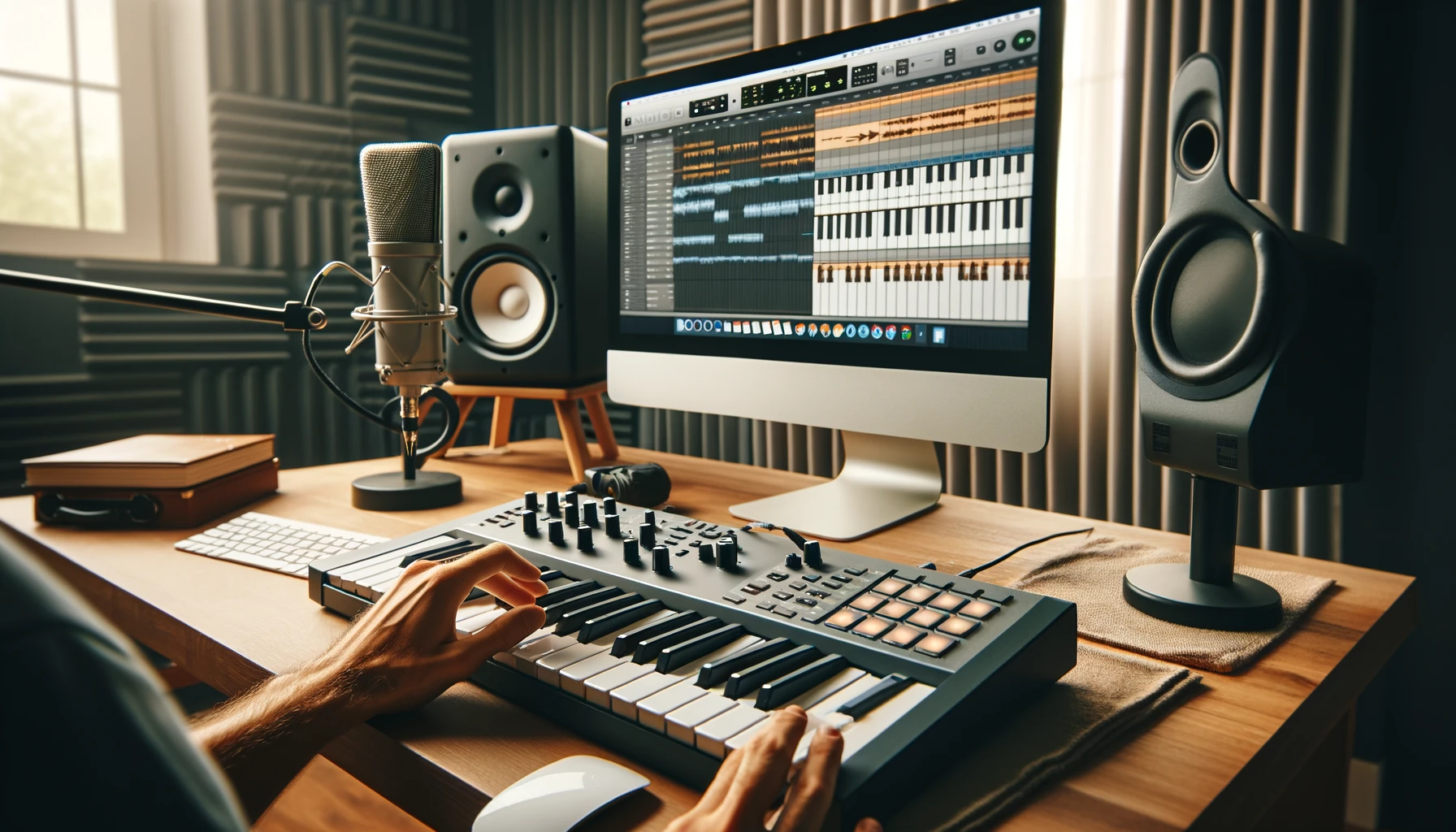Struggling with getting your MIDI keyboard set up with GarageBand?
Connecting a MIDI controller to GarageBand allows for more expressive music production and performance.
Let’s dive in to the steps for easy MIDI connectivity on both Mac and iOS.
How To Connect MIDI Controller To GarageBand?
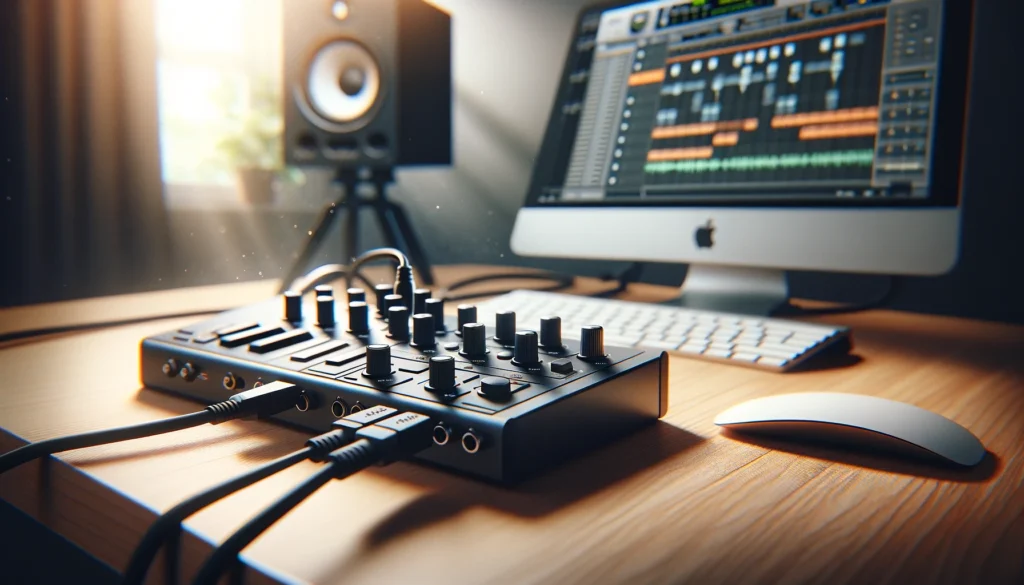
You can connect a MIDI controller to GarageBand by using a USB cable on Mac or the appropriate Apple adapters on iOS devices.
MIDI input will be detected automatically when connected.
While that summarizes the very basics, we’ll explore the steps for connecting MIDI gear to GarageBand more in depth below.
What is a MIDI Controller and Why Connect it to GarageBand?
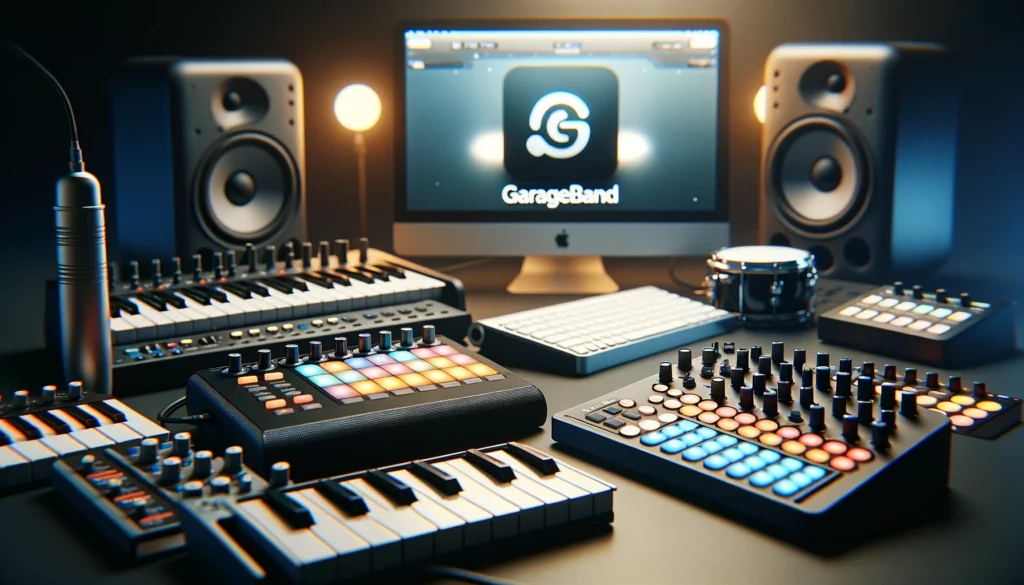
A MIDI controller is a piece of musical equipment that is used to generate MIDI data signals.
These MIDI signals can then control features of digital audio workstation (DAW) software like GarageBand.
There are many types of MIDI controllers available, but some common ones include MIDI keyboards, drum pads, control surfaces, and more.
MIDI controllers do not generate any actual sound themselves.
Instead, they just send instructions to software instruments and other MIDI devices, controlling elements like musical notes, tempo, volume, vibrato, panning, and much more.
There are a few great reasons why someone would want to connect a MIDI controller to GarageBand on either Mac or iOS devices.
First, MIDI controllers allow for more expressive and dynamic control over virtual software instruments.
For example, you can control note velocity for added expression, use a sustain pedal on a MIDI keyboard, or utilize pressure-sensitive aftertouch control.
Second, MIDI controllers are very playable instruments that can make recording software instruments in GarageBand far easier than relying on the mouse or touch screen alone.
This allows you to record musical parts in quickly and with solid timing and feel.
Lastly, MIDI controllers give you tactile control over mixer and editing functions in GarageBand.
Instead of adjusting faders, knobs and transport controls with your mouse, you can use dedicated buttons, faders and knobs on your MIDI hardware.
What Are The Compatible MIDI Controllers for GarageBand?
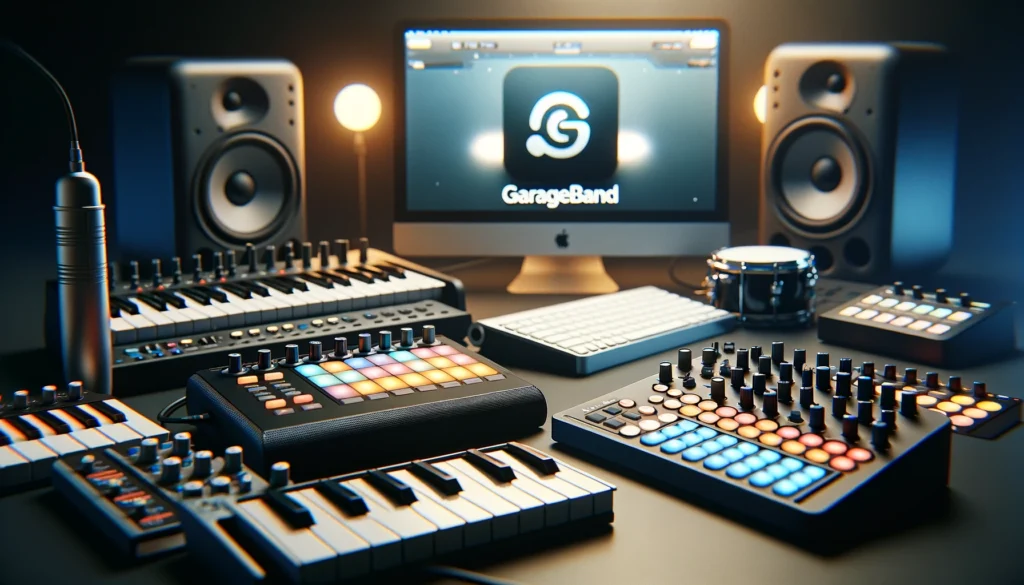
There are many great options for MIDI controllers that work flawlessly with GarageBand.
When it comes to choosing the right gear, you mainly need to ensure the controller connects easily via USB or iOS compatible connectivity options.
It also needs MIDI DIN or class compliant USB drivers so no special software is required.
Here are some of the most popular and widely used MIDI controllers for controlling GarageBand on Mac and iOS:
MIDI Keyboards:
– Akai MPK Mini
– Novation Launchkey 25/49/61
– Arturia KeyLab Essential 49
– Native Instruments Komplete Kontrol A-Series
Drum Pads & Control Surfaces:
– Akai Pro MPD218
– Novation Launchpad
– Arturia BeatStep Pro
– Native Instruments Maschine MK3
iOS MIDI Controllers:
– Korg MicroKey Air 37
– ROLI Seaboard Blocks
– Akai SynthStation 49
– IK Multimedia iRig Keys 2
Make sure to double check hardware specs and connectivity to ensure full compatibility before purchasing any third-party MIDI gear.
Also try to get hands-on experience testing in store if possible.
Steps to Connect MIDI Controller to GarageBand
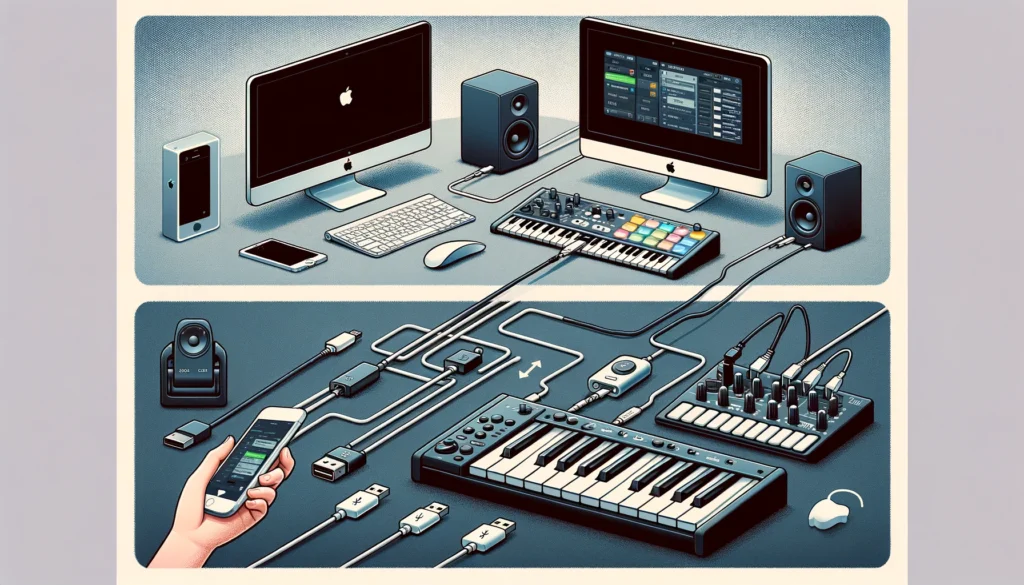
Connecting your midi controller up properly is key to unleashing all the performance and production benefits this gear provides with GarageBand.
Here is an overview of the steps involved:
On Mac
Connecting a USB MIDI controller to GarageBand on Mac is very simple.
Just follow these steps:
First, physically connect your MIDI controller to your Mac using the supplied USB cable.
Plug one end into an open USB port on your Mac, and connect the other end to the USB connector on the MIDI device.
Make sure both ends are fully inserted.
Next, open up Audio MIDI Setup which is a utility built into your Mac OS.
Locate your MIDI controller in the MIDI Studio window.
Confirm that GarageBand is visible in the MIDI Destination column, showing that signal routing is active to the software.
Now launch GarageBand and open the Preferences window under the GarageBand menu.
Click on the Audio/MIDI tab, then enable the corresponding track box for the MIDI controller you wish to use.
This will activate a track in GarageBand to receive the MIDI input.
Go back to the main GarageBand window and record enable a software instrument track.
This is where the sounds will be triggered from your MIDI controller. Make sure monitoring is enabled so you can hear the instrument sounds played live.
Finally, play a few notes, chord or drums on your MIDI controller.
The input should trigger instrument sounds on the GarageBand track, confirming everything is working correctly.
Make an initial test recording to verify MIDI input is being captured as you perform.
On iOS Devices
Connecting external MIDI devices to GarageBand on iPhone or iPad devices requires Apple’s official adapters.
Here are the steps involved:
For iOS devices with 30-pin connector like iPhone 4 or iPad 2, you will need Apple’s iPad Camera Connection Kit accessory.
This includes a USB to 30-pin adapter for compatibility.
Plug this into your iOS device, connect your MIDI controller via USB to the adapter.
Open GarageBand and access the Smart Instruments tab.
For Lightning connector iOS devices like iPhone 8 or iPad Pro, use Apple’s official Lightning to USB Camera Adapter.
This allows you to connect USB devices and MIDI controllers directly to Lightning connector iOS hardware.
Follow the same steps as above, connecting your MIDI controller to GarageBand using this adapter.
In both cases, input from your connected MIDI controller will be automatically detected in GarageBand.
Add a software instrument track, like keyboard or drums, and play your hardware controller to verify recognition and sound triggering.
You can now write tracks using the intuitive and tactile control surface.
How To Adjust Settings in MIDI Controller and GarageBand
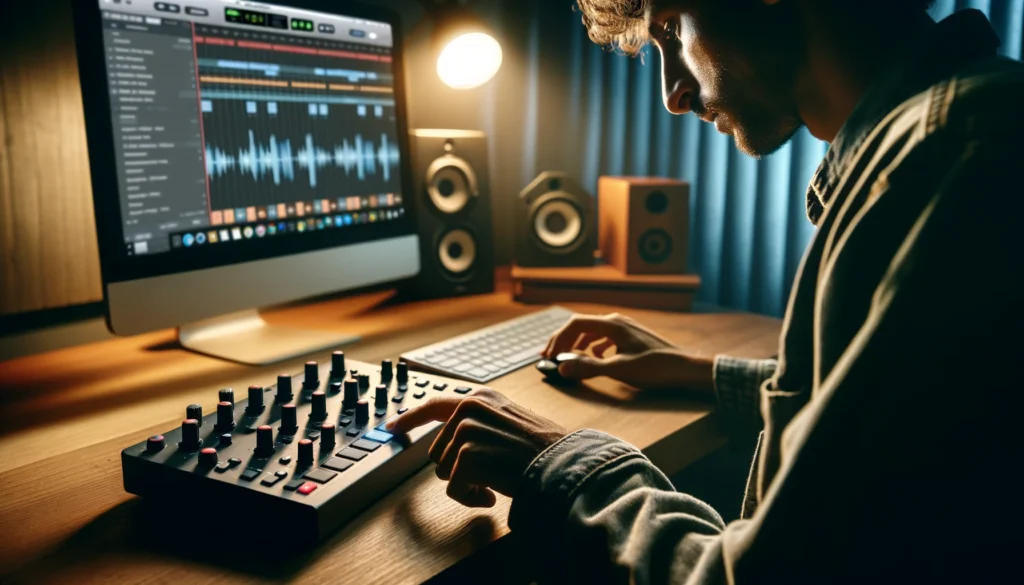
To optimize performance and avoid issues, there are a few key settings in both the MIDI Controller itself and inside GarageBand that you may need to adjust:
In your MIDI keyboard, drum pads or other controller, set the device MIDI channel to match the input channel for the track in GarageBand that you wish to control.
For most purposes, MIDI channel 1 is standard.
Read your device manual for adjusting MIDI channels if needed.
Many MIDI controllers also allow you to change the MIDI note octave range, velocity sensitivity, pitch bend range and other parameters.
Adjust these to suit the type of GarageBand track and virtual instrument you are playing.
For example, lower octaves for bass parts.
Within GarageBand’s Track Info pane for the software instrument track receiving your MIDI input, confirm the correct synth sound or sampler patch is chosen to match your controller type.
Choose appropriate GarageBand keyboard/piano sounds for MIDI keyboards for example.
When recording MIDI controller parts on multiple tracks, ensure the Input Channel for each matches the MIDI channel set on each piece of hardware.
This routes things cleanly during recording and playback.
How To Troubleshoot Connectivity Issues When Connecting?
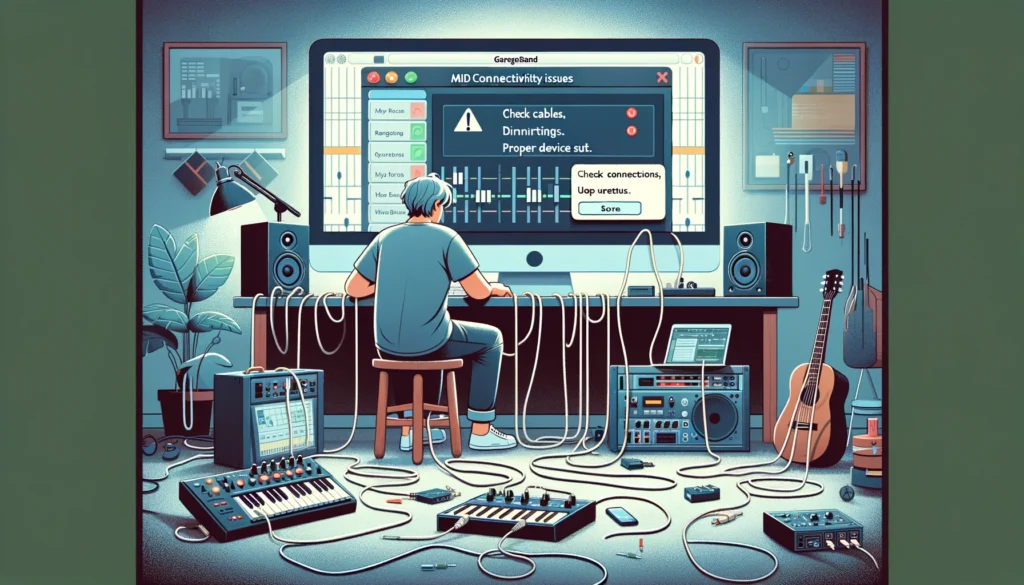
Despite best intentions during setup, connectivity problems can still arise sometimes when linking MIDI gear to GarageBand and iOS devices.
Here are some common issues and potential fixes:
If the MIDI controller is not triggering any instrument sounds on the track, first confirm monitoring for the track is enabled in GarageBand.
If it still fails, check cables and adapter connections then test with Audio MIDI Setup to rule out problems with the OS detecting signal.
Stuck or hanging notes that continue indefinitely, could indicate problems with MIDI signal termination.
Adjust note-off velocity sensitivity or reset the MIDI controller to factory spec.
GarageBand polyphony limits could also be exceeded.
If the wrong GarageBand instrument sound is triggered accidentally, it is likely a mismatched MIDI channel between hardware and software track input settings.
Double check channels match on both sides.
Use Apple’s MIDI Monitor utility if available to check the MIDI signal flow coming from the controller into GarageBand.
This may reveal errors in MIDI messages causing dropped notes for example.
Hopefully resolving any MIDI connectivity headaches will allow you to focus on making great music in GarageBand with your new MIDI controller!
Leverage the advantages of tactile dynamic hardware control with the processing power of GarageBand creative features.
Conclusion
In summary, connecting a compatible MIDI controller opens up tremendous creative possibilities with GarageBand.
The tactile control over software instruments, from keyboard playing to drum beats, makes the music production process more dynamic, expressive, and enjoyable.
By following the connectivity steps outlined above you will be recording MIDI tracks in GarageBand smoothly in no time. Now get ready to unleash your musical inspiration!
